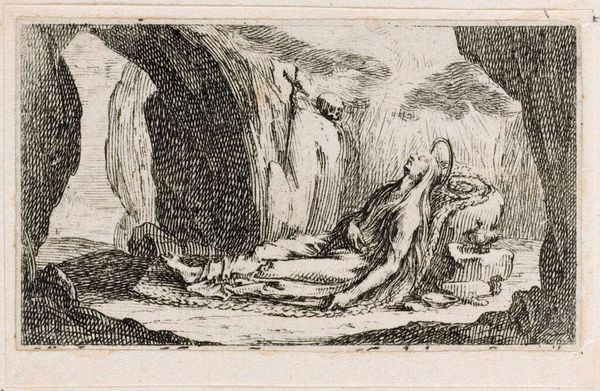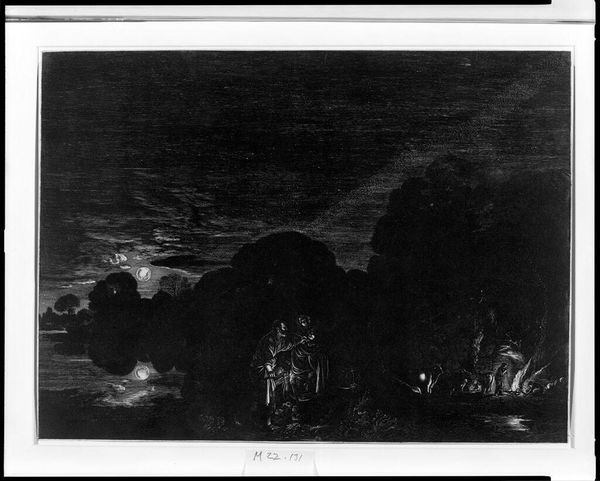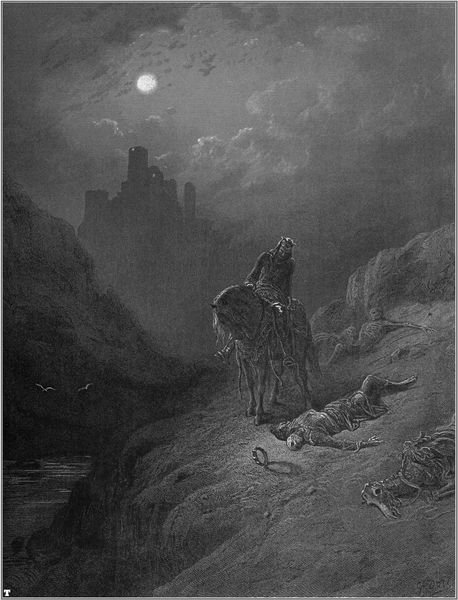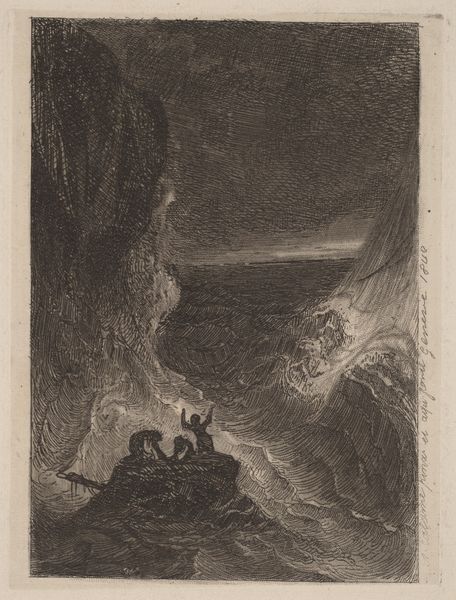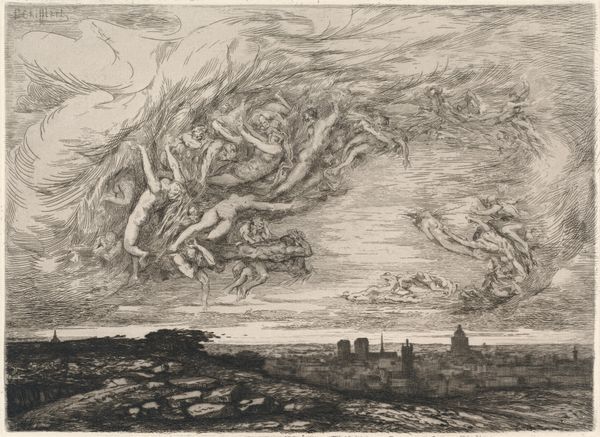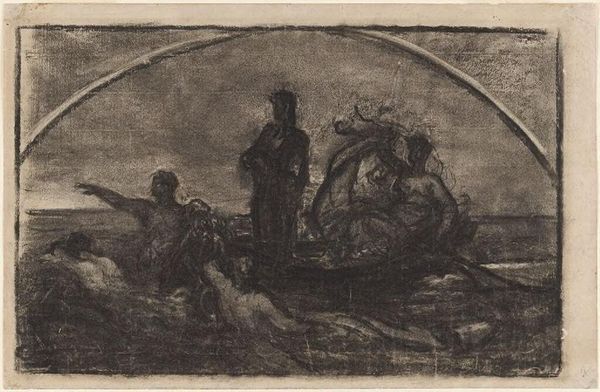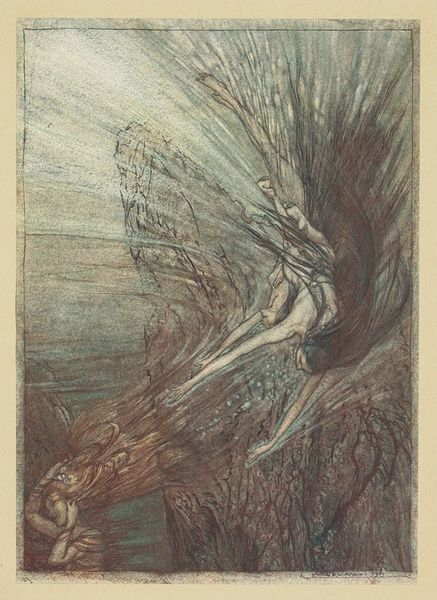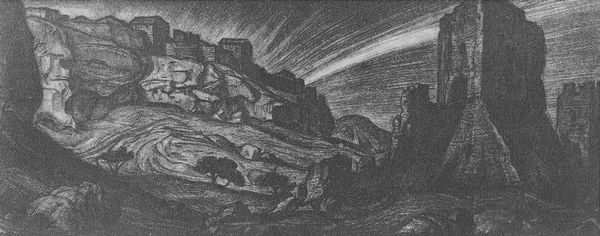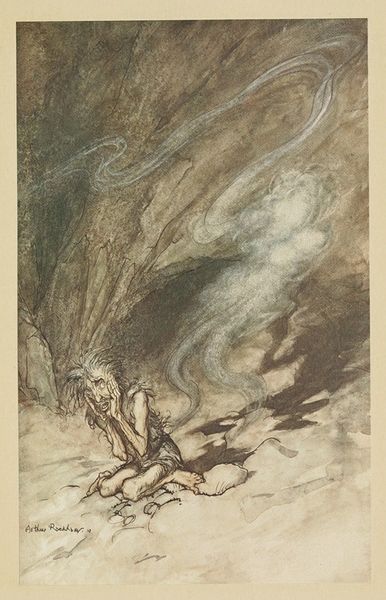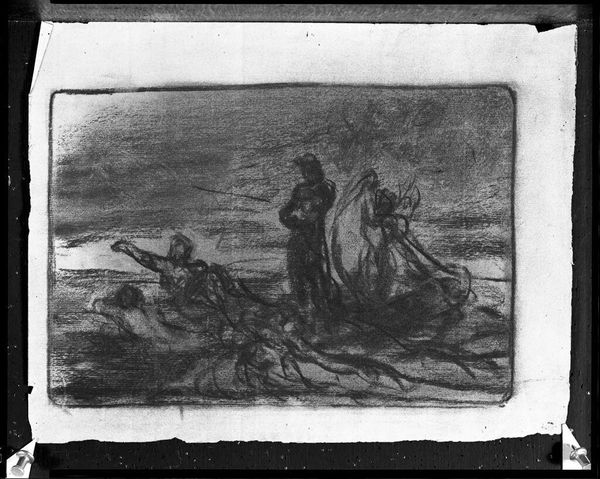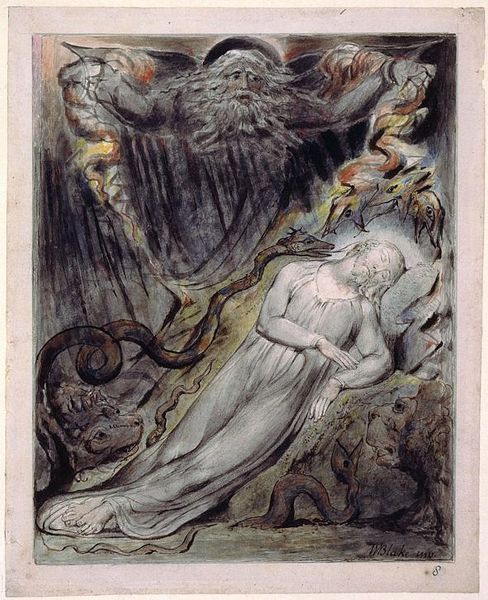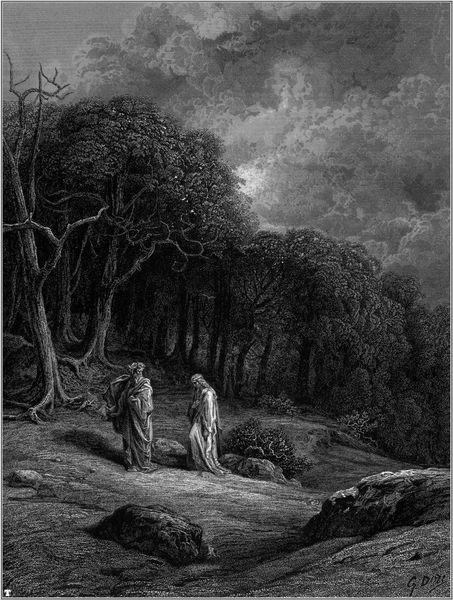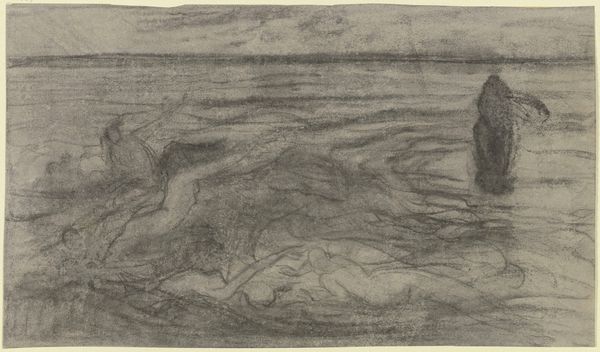
drawing, pencil, charcoal
#
drawing
#
narrative-art
#
ink painting
#
landscape
#
charcoal drawing
#
figuration
#
charcoal art
#
pencil
#
symbolism
#
cityscape
#
charcoal
#
watercolor
Copyright: Public domain
Curator: This is Théophile Alexandre Steinlen's "Vision de Paris" from 1898, created using charcoal, pencil and drawing. What do you make of it? Editor: It’s certainly a striking piece. I’m immediately drawn to the contrast between the monumental, almost god-like figure in the foreground and the city in the background. There's a lot going on; so much movement in the bottom. What should I be paying attention to? Curator: Let’s consider the materials. Steinlen chose charcoal and pencil, media easily accessible and associated with working-class imagery. Look at the texture, the blending – how does this affect the overall impact of the work? Could another medium express similar intent? Editor: The softness of the charcoal creates a dreamlike quality, but also perhaps a grittiness. It's not idealized, it's messy, real, which adds to that impression of realism despite the overall symbolism of the composition. What does the city symbolize? Curator: And consider Steinlen’s political leanings at the time. The huddled figures could be an overt illustration of society at this time, perhaps highlighting class division in fin-de-siècle Paris. What is he saying about the human condition? Editor: I can now appreciate this 'Vision of Paris' more through a socio-economic lens. Steinlen masterfully uses his craft to comment on the stark reality of urban life in that era. Curator: Precisely! Understanding his choices about material and production allows a deep appreciation of his commentary. How does this inform your current artistic thinking? Editor: By prompting questions on art creation, "Vision of Paris" reminds me that art is made for the public through materials representing social messages.
Comments
No comments
Be the first to comment and join the conversation on the ultimate creative platform.
